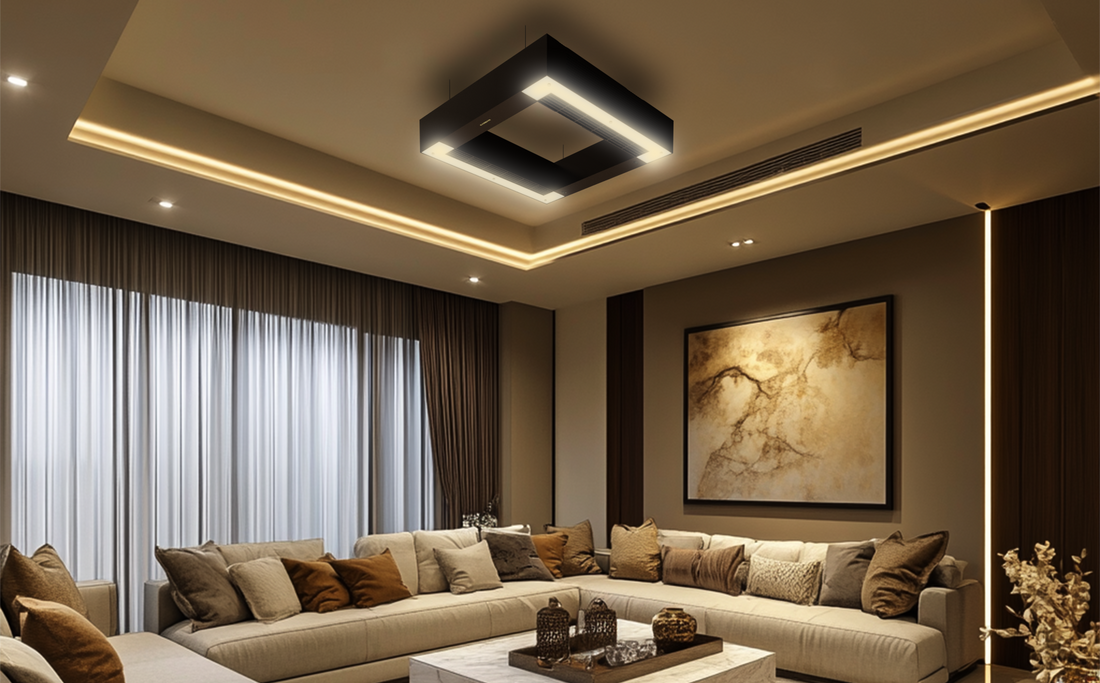Things to Know before buying an Air Purifier

Optimizing Air Quality: Things to Know before buying an Air Purifier
As urban landscapes evolve and industrialization advances, the air we breathe bears the burden of progress. Across India's diverse cities, the air quality narrative unfolds with troubling statistics, revealing the severity of an escalating crisis. The persistent elevation of the Air Quality Index (AQI) underscores a universal challenge. In the face of this environmental urgency, a critical lens is cast upon the efficacy of air purifiers within our homes.
Driven by an ever-mounting concern for air quality, the demand for air purifiers in India has witnessed a remarkable surge. However, beneath the surface of these promising figures lies a critical flaw in the current trajectory of the air purification industry. Despite the surging demand, the efficiency of air purifiers remains a poignant concern.
The Inefficiency of Air Purifiers
A common practice among consumers involves placing air purifiers in isolated corners of rooms, yielding a modest 20-30% reduction in particulate matter within the immediate vicinity of the device. This approach, however, leaves the majority of indoor air untreated, exposing a fundamental flaw in the conventional methodology. The air circulation loop around the air purifier, encompassing both the throw and suction of air, is notably low when compared to an air purification device strategically placed at the center of any given space, and on the ceiling.
Moreover, intermittent usage driven by electricity concerns in a country like India compromises the overall effectiveness of air purifiers, allowing pollution to infiltrate indoor spaces during periods of inactivity. Proposing a solution, encouraging continuous working of air purifiers could mitigate the impact of intermittent electricity supply.
We need High Airflow
In navigating the intricate marketing landscape, understanding the delicate interplay between airflow and efficiency becomes paramount. Amidst a myriad of air purifiers saturating the market, many boast high efficiency but suffer from low airflow, creating confusion for consumers. The significance of higher airflow cannot be overstated; it acts as the conduit that carries particles through the filter. Without sufficient airflow, the efficiency of a filter becomes inconsequential, rendering it incapable of effectively capturing pollutants.
To make informed judgments about the effectiveness of air purifiers, consideration must be given to the Clean Air Delivery Rate (CADR). This metric provides a comprehensive view of a purifier's ability to deliver clean air, considering both the efficiency of particle removal and the volume of air processed. A higher CADR indicates a more effective air purifier, providing consumers with a reliable benchmark for comparison.
Furthermore, it is crucial to consider various stages of air filtration, tailoring the approach to the specific conditions and AQI of the area. Some air purifiers feature a multistage filtration system, with each stage designed to target specific types and sizes of particulate matter (PM). Understanding the nuanced differences between filtration systems aids in selecting the most suitable option for homes.
Maintaining Air-purifiers
Addressing the maintenance aspect of air purifiers is crucial for ensuring their optimal performance and effectiveness. Regular maintenance, including filter replacement or cleaning, is necessary to keep the air purifier functioning efficiently. Filters play a key role in trapping and removing particulate matter and pollutants from the air. Over time, these filters can become clogged with contaminants, reducing their effectiveness.
Owners must be aware that sensors on their devices require regular cleaning to avoid false positives or inaccurate displays, which could compromise performance. Regular sensor cleaning ensures accurate readings and enhances the overall efficacy of air purifiers.
Neglecting filter maintenance can lead to decreased efficiency, as a clogged or dirty filter cannot effectively capture pollutants, and the overall performance of the air purifier may suffer. Inefficient air purifiers not only compromise the quality of air they produce but also consume more energy, potentially increasing operational costs.
Incorporating the cost of filter replacement into the overall ownership of an air purifier is essential for reaping the full benefits of clean indoor air. Regular maintenance is key to ensuring that air purifiers continue to function optimally, providing a healthier living environment for users.
Embracing Innovative Solutions: One Karban at a time
3 in 1 innovative solution: Bladeless Ceiling Fan + Air Purifier + Light
To meet these challenges, India's airflow industry must embrace innovative solutions grounded in meticulous research and development. Beyond the commonly used Brushless Direct Current (BLDC) motors, substantial investment is needed to develop centrally integrated devices. Strategically placing these devices and optimizing their aerodynamics could yield a remarkable 80-90% reduction in indoor pollutants.
Incorporating these advancements into the industry could not only have a profound impact on air quality but also on consumers' wallets. A centrally located, integrated air purification system has the potential to reduce energy consumption by up to 40%, providing significant financial relief for millions of Indians grappling with escalating energy costs.
In a world where climate change and environmental sustainability are at the forefront of global discourse, a comprehensive solution to India's air quality crisis is more pressing than ever. The nation must invest in cutting-edge technology, foster dedicated research and development, and implement integrated, centrally located solutions that are not only effective but also user-friendly. A paradigm shift is not just desirable; it is essential.
In conclusion, the inefficiency of India's airflow industry not only jeopardizes the health of its citizens but also contributes to escalating electricity bills and energy wastage. To combat this crisis, a comprehensive approach is imperative. Investment in research and development, coupled with a focus on aerodynamics and integrated devices, can revolutionize the way India breathes. It's time for the airflow industry to acknowledge its shortcomings and work towards a cleaner, healthier, and more energy-efficient future for all.


